Indoor ficus flowers: varieties and rules for caring for them
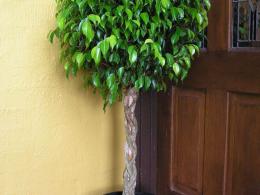
Ficus belongs to the evergreen plants of the mulberry family. In total there are about one thousand different species ficus, but not all are suitable for breeding at home. The plant does not require special conditions for growth and development. It fits perfectly into the interior of any apartment.
Content
Types of home ficus
Ficuses have gained well-deserved popularity among gardeners. This plant is one of the most common varieties of flowers that are grown at home. There are many signs associated with this flower; according to one of them, the plant can attract good luck and optimize space.
The plant secretes special phytoncides, with the help of which the air in the room where the flower is located will be purified.
Almost every apartment has some specific variety of ficus. Different types of flowers can differ significantly from each other. In nature, the most famous variety of ficus is the fig, or, as it is also called, the fig tree.
To the most common household varieties include:
- Benjamin
- Rubber-bearing
- Creeping
- Dracaena
- Karika
- Palmera
- Ivy-shaped
- Microcarpa
- Bengal
Ficus trees of different varieties differ in their appearance. They are not the same height, they differ in the shape and size of the leaves.Some species look like trees, others are climbing vine-like plants. But the care requirements for all these flowers are almost the same.
Flowers grow well even in places with a lack of sunny color. The growth and development of the plant is not affected by air humidity and temperature. The homeland of most plants is the Asian tropics. Therefore, all ficus trees love warm, moist air.
Ficus benjamina
Ficus benjamina is one of the most common varieties grown at home. The species got its name from Benjamin Deidon, a famous British botanist. This variety, in turn, is divided into several subspecies:
- Lovely is a variety of the Benjamin variety. The plant has the shape of a small tree. Its leaves are pointed at the ends. The leaf color is very unusual: the green leaves have a white edge around the edges.
- Natasha - this ficus bush can reach a height of 2 meters even when grown at home. The plant has small, medium-sized leaves, they have a lush green color.
- Kinki is one of the types of Ficus Benjamin, which is a dwarf plant with narrow leaves.
Each representative of this species has the shape of a weeping tree, with leaves hanging down. The difference is the shape and color of the leaves. Under natural conditions, the plant can reach 20 meters; the indoor version grows up to two meters. The trunks of the plant can be intricately intertwined, forming interesting shapes.
The plant does not require special conditions. Therefore, novice plant growers can start breeding it. And also those who do not have a lot of free time to care for flowers.For the flower to grow and develop, it must be placed in a warm, bright room. With abundant watering Stagnation of liquid in the ground should be avoided.
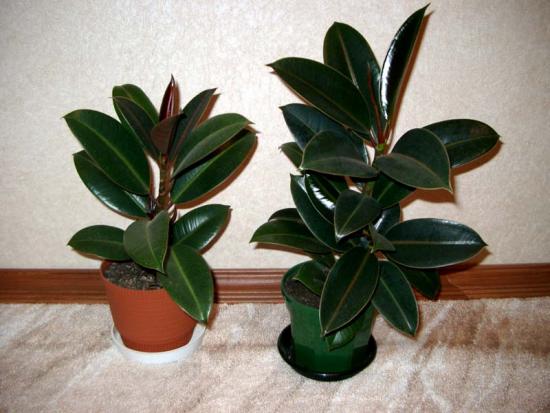
This plant looks good in spacious rooms. Its crown can be shaped by pruning.
Rubber-bearing ficus
The flower has other names. It is called Elastic, Elastic. In past years, rubber was obtained from the sap of ficus in Brazil, and due to this quality the flower received its name. Under natural conditions, the plant reaches a height of 30 meters, its leaves can grow up to 35 cm. The domesticated version of the flower does not bloom. It has large oval leaves, pointed at the tips.
This variety is suitable for busy people who do not have time to care for the flower. The plant requires minimal conditions for development. All you need is a well-lit place and moderate humidity. Lack of light can negatively affect the condition of the leaves - they will begin to fall off.
Melanie is the most popular type of rubber ficus. The shape of the flower is a neatly shaped bush with shiny large leaves. The poisonous juice secreted by the plant was used to make rubber; it is quite toxic. Therefore, this type of flower is not suitable for allergy sufferers. It is also undesirable to have this plant if there are small children and pets in the house. In addition to this variety, the following subspecies are classified as rubber varieties:
- Belize
- Robusta
- Black Prince
Creeping ficus

The creeping variety differs from other types.If the rest of the plants resemble small trees in appearance, then the creeping version refers to climbing varieties with creeping shoots that can attach to any surface thanks to the roots with suckers formed on the stems.
Its leaves are small. The leaves have a pattern that is more visible in bright sunlight. The creeping ficus, like other representatives, does not need special attention. It needs cool air temperatures and plenty of watering.
Bengal ficus
The flower has an unusual trunk shape. There is a feeling that the plant has several trunks. Actually from one. But as the trunk develops, roots begin to form on it, which hang down and, reaching the soil, take root in it. This is how new trunks are obtained, which, as they develop, give rise to new shoots.
For this reason, the flower grows wider than it is tall. This variety is prized for its abundant, lush foliage. The flower looks good in rooms with a small area. Care Minimal maintenance required for this plant. It is placed in well-lit places, excluding direct rays of the sun.
The rays can cause burns on the leaves. You should also protect the flower from drafts. Ficus is a fairly popular indoor plant. Even novice amateur gardeners can cope with its cultivation.
Video about propagation of Ficus Benjamin:

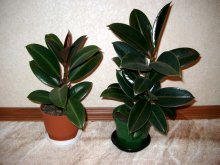
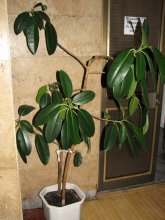
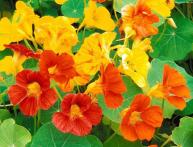
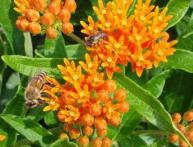
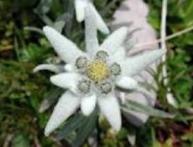
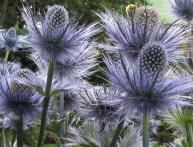
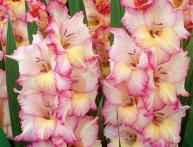

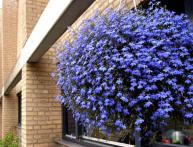
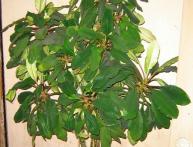
Comments
I have two types of Ficus Benjamin, they have been growing quite successfully for several years, sometimes they drop their leaves, but then new ones grow. But for some reason the rubber-bearing ficus did not take root, the leaves began to turn black and fall off.